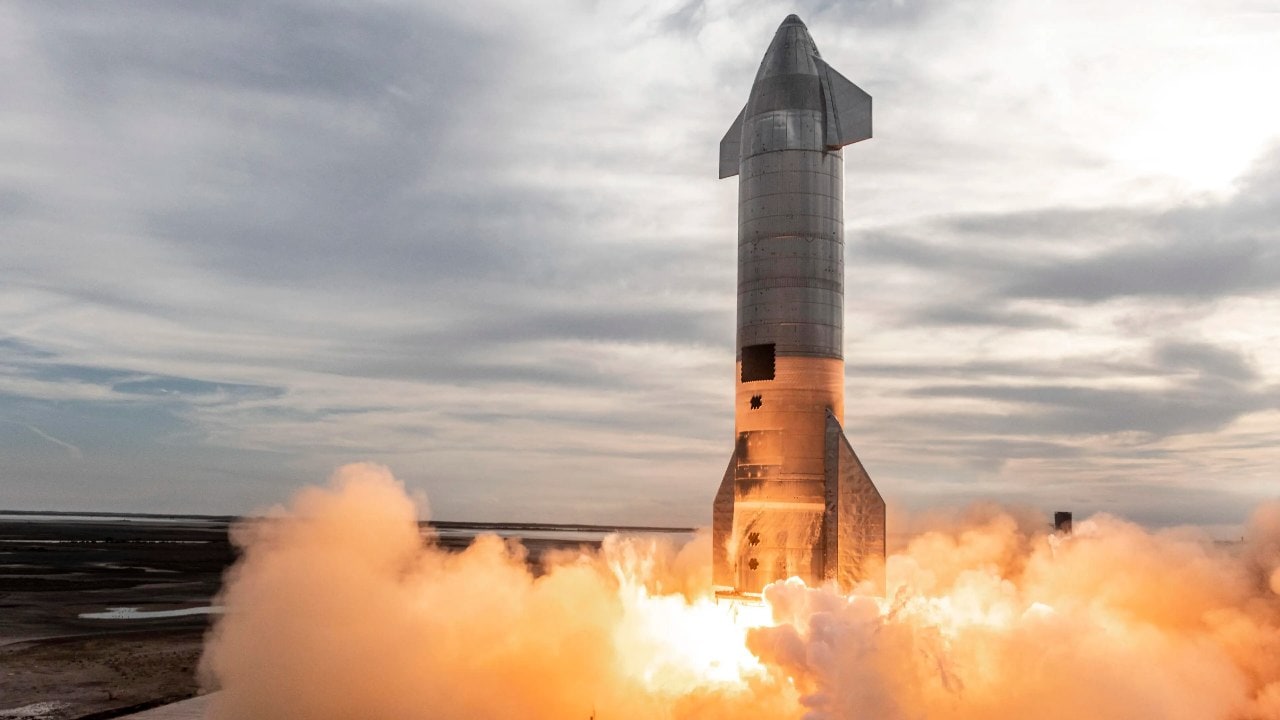
tech2 News StaffMar 30, 2021 20:41:39 IST
The Starship SN11 prototype rocket from SpaceX has joined the ghosts of its brethren in rocket heaven, after a mid-air explosion during a test flight on Tuesday, 30 March. The uncrewed test flight of SN11 saw the interplanetary prototype rocket from SpaceX take flight from the development facility in Boca Chica, Texas, at 8 am local time (6.30 pm IST) on Tuesday amid heavy fog, with little-to-no visibility. It flew up 10 km (6.2 miles) before a loud explosion was heard, and pieces of debris were seen flying near the launchpad.
Elon Musk, CEO of SpaceX, tweeted an update minutes after the explosion occurred, citing an engine issue. “…engine 2 had issues on ascent & didn’t reach operating chamber pressure during landing burn, but, in theory, it wasn’t needed,” he said. A physical examination of the debris will be important to piece together “something significant” that happened soon after the engines were fired for landing, he went on to say. In an earlier tweet, Musk made light of the catastrophe, saying “at least the crater [was] in the right place.”
[embedded content]
The foggy-weather launch was unusual for a Starship prototype, with the spacecraft hardly visible from cameras set up near the launchpad. Cameras captured SN11’s flaps catching wind above the clouds before its ill-fated descent. SpaceX’s own cameras froze just as the spacecraft’s powerful Raptor engines reignited for a planned soft-landing. With the poor visibility on-ground, the only thing that seems clear so far is that SN11 exploded mid-air.
The test flight of SN11 is the latest in an aggressive series of back-to-back tests for the SpaceX Starship prototype. In the last four months, the world has witnessed SN8, SN9, and SN10 take flight – all followed by explosions during landing (except for SN10, which exploded minutes after making a safe landing).
Future iterations: SN15, SN20 and beyond
The next batch of spacecraft are upgraded versions of the current prototypes, starting with SN15, according to a CNET report. In his subsequent tweets, Musk shared that SN15 was due to roll out to the launch pad in the days to come, sporting “hundreds of design improvements across structures, avionics/software & engine” that might overcome the issue that ended in SN11’s mid-air explosion.
The next major leap in Starship technology, however, will be seen with SN20, Musk clarified. The series starting with SN20 will be “orbit-capable”, featuring the heat shield & stage-separation system that bring it considerably closer to being a human-rated spacecraft. Musk predicts that these vehicles will need “many flight attempts” to survive re-entry in the atmosphere & safe landing.
Starship was built to fly humans to Mars someday, but will also be used in the dearMoon mission, SpaceX’s “first civilian mission to the moon” slated for no earlier than 2024. The only confirmed member of the dearMoon crew, Japanese billionaire-entreprenuer Yusaku Maezawa, is on the hunt for eight fellow crewmembers that will fly around the moon and back on Starship.
Post a Comment